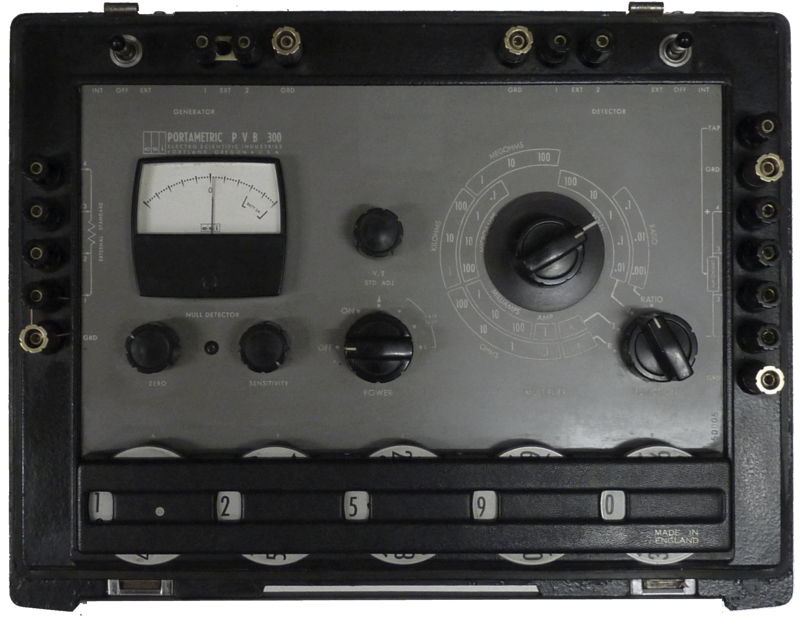
ESI Potentiometric
voltmeter bridge. This is a versatile
instrument which can be used as a Voltmeter, Ammeter, Kelvin Bridge,
Comparison Bridge, Ratiometer, & Null Detector. It can be used with
internal or external generator voltages and/or the built in or external detector.
Brief specification:
Voltage: measured or generated: 1 mV to 5
volts with 5 digit resolution, accuracy: �0.01%, Voltage input: up to
500 V with 1 M ohm input resistance �0.02%. Reference: unsaturated standard cell
and zener diode.
Resistance:0.1 ohm to 100 M
ohms with 5 digit
resolution, accuracy �0.01%. Four terminal Measuring system.
Current: 1 mA to 10 amps with
internal
shunts same resolution and accuracy as potential measurement. Range
extendable with external shunts.
Ratio: Voltage or resistance
with
external voltage source, Range of 5 digit dials multiplied by 1, 0.1 or
0.01. Accuracy: � 0.01% of reading.
Current source and calibration
shunts: range DC supply current programmable from 10 mA to 10 A DC
shunts: ranges 5 uA to 15 amps. DC or AC up to 20 kHz.
Requires Five 1.5V "D" cells and two 8.4V Mercury Batteries (Two PP3 9Volt batteries in series can be substituted).
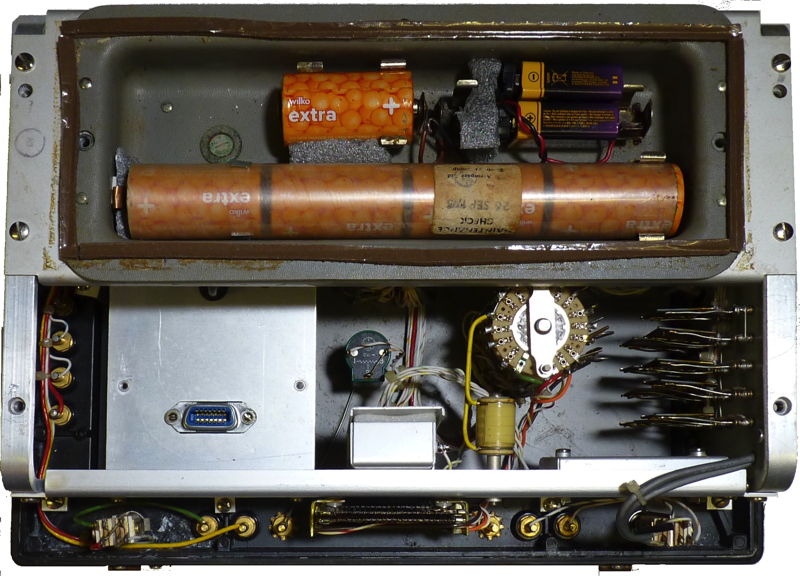
Inside view with amplifier removed
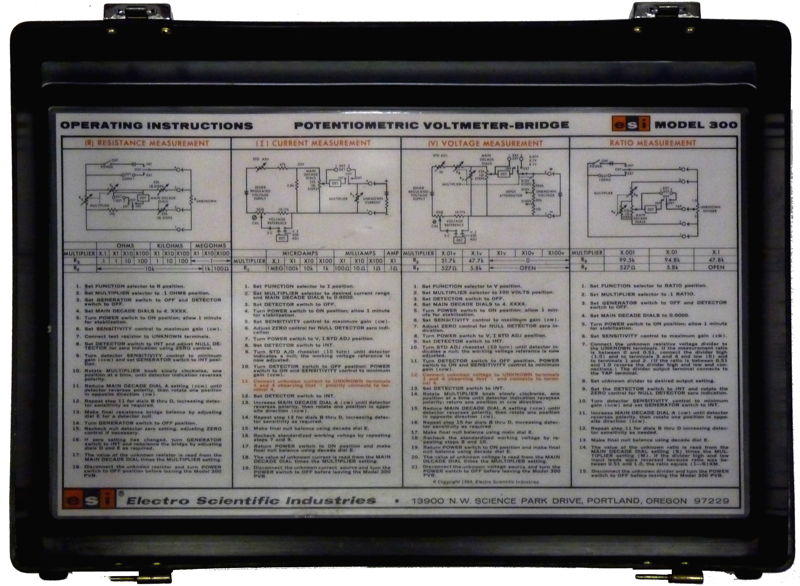
Brief working instructions in lid
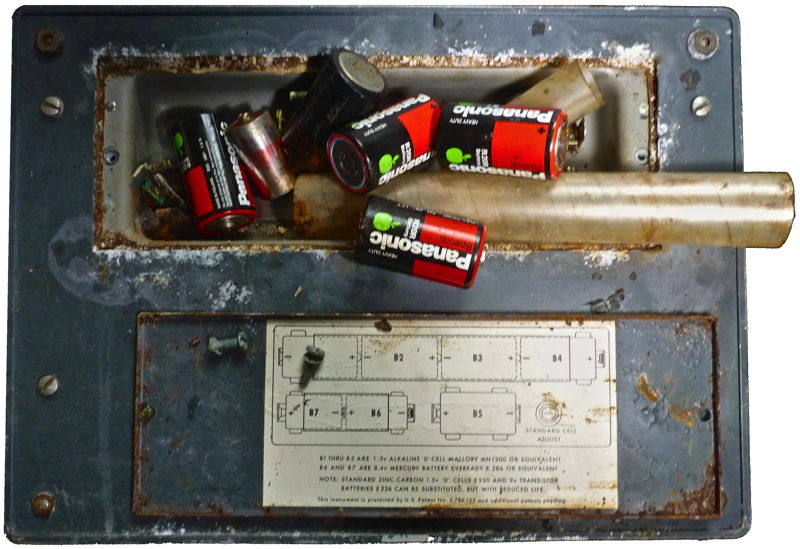
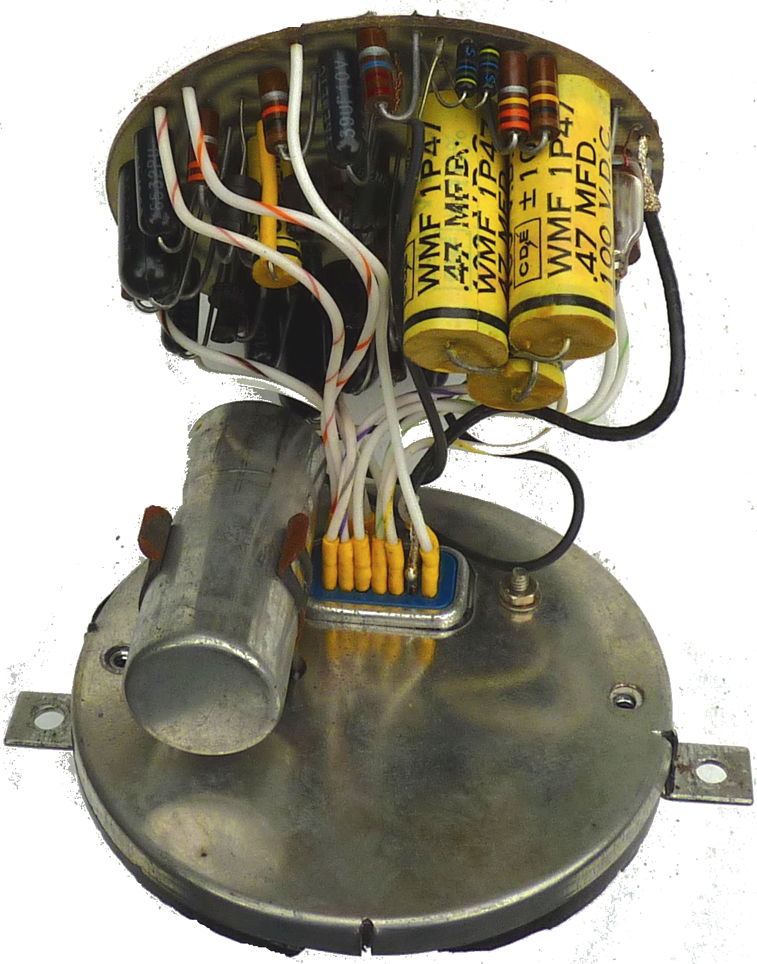
Corroded batteries and battery
compartment and DC amplifier with casing removed
I was given this instrument which
formed part
of
a collection of many instruments collected by Bob Evans by his
daughter Alice Kirby. Unfortunately it had spent many neglected years
with a set of leaking batteries which had leaked and corroded the
casing, the battery clips and contacts. I removed the battery
compartment and washed and scrubbed it and made a new contact and
battery clip, The casing and battery cover were scraped, sanded and
painted. A fresh set of batteries including two PP3s in series were
inserted (see second picture) and operation as a bridge proved
satisfactory only if the internal amplifier was removed and an external
detector was used (a digital multimeter). The standard cell proved to
be OK and operation as a voltmeter also proved to be accurate. The
amplifier responds to bridge unbalance and the sensitivity and zero
controls seem effective but it somehow indicates erroneously. I
have opened up the amplifier as can be seen above. As yet I have not
found a solution to this problem, the manual has a wiring diagram but
has no information about the amplifier.

